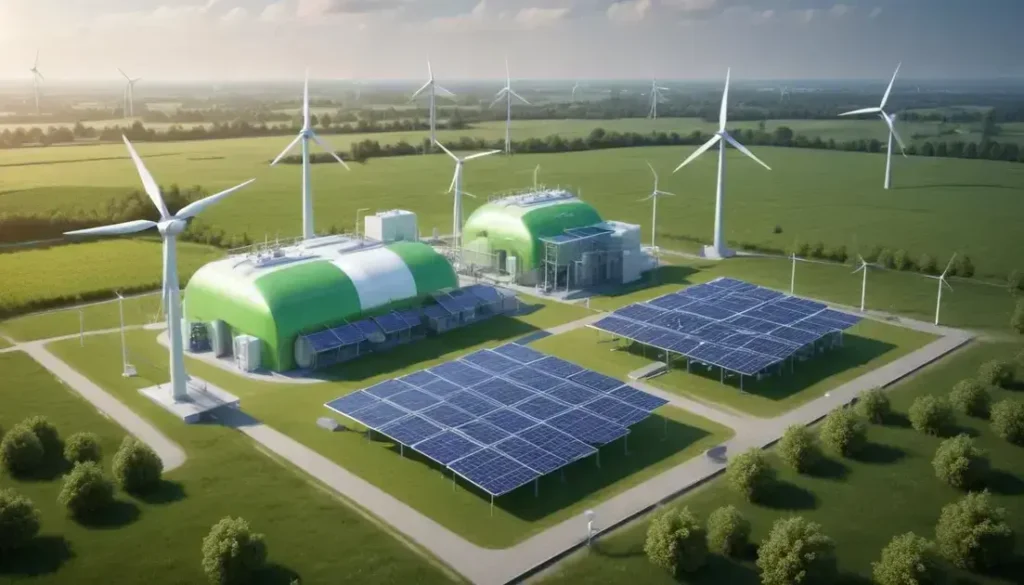Electric vehicles (EVs) are becoming more popular due to advancements in battery technology, increased affordability, and a growing emphasis on sustainability, making them a viable option for families and a critical factor in the future of transportation.
In the evolving landscape of electric vehicles, Electric Vehicles are becoming increasingly pivotal. General Motors is making significant strides, positioning itself as a major player in this competitive market.
General Motors’ rise in EV sales
General Motors (GM) has made significant strides in the electric vehicle (EV) market, witnessing a remarkable rise in sales. The company has invested heavily in developing new EV technologies, aiming to provide innovative options for consumers. As the automotive landscape shifts towards sustainability, GM’s focus on electric mobility positions it as a key player in the industry’s transformation.
Strategic Partnerships and Innovations: GM is not only enhancing its product lineup but is also forming strategic partnerships. Collaborations with battery manufacturers and tech firms are essential for creating efficient and robust EVs. By leveraging advancements in battery technology, GM aims to improve vehicle range and reduce charging times, making EVs more appealing to a broader audience.
Furthermore, GM’s commitment to reducing its carbon footprint aligns with global sustainability goals. The introduction of models like the versatile Chevrolet Bolt and the powerful Hummer EV showcases GM’s dedication to offering a variety of electric vehicles. This strategy not only meets consumer demand but also reinforces GM’s role in shaping the future of transportation.
Cassandra Garber’s role at GM
Cassandra Garber plays a pivotal role at General Motors (GM) as the leader of the company’s electric vehicle strategy. Her vision is instrumental in navigating the complexities of the EV market and ensuring GM remains competitive. With extensive experience in the automotive sector, Garber is committed to pushing the boundaries of innovation and sustainability.
Leadership and Vision: Under her leadership, GM has intensified its focus on research and development for electric vehicles. This includes enhancing battery technology and exploring alternative energy sources. Garber believes that collaboration is key, driving partnerships with tech companies to accelerate EV advancements.
Garber’s efforts are reshaping GM’s corporate culture towards a more environmentally-conscious approach. She champions initiatives that not only improve vehicle performance but also address climate change. By promoting electric mobility, Garber aims to align GM’s goals with global sustainability targets.
Moreover, Garber is actively engaged in community outreach, educating the public about the benefits of electric vehicles. Her dedication extends beyond the corporate role, as she advocates for policies that support the growth of the EV sector. Through her initiatives, Garber is not only changing the face of GM but also contributing to a greener future for the automotive industry.
The impact of Tesla’s market changes
Tesla’s influence on the electric vehicle (EV) market is profound, shaping consumer expectations and competitive dynamics. The company has pushed the boundaries of innovation and technology, setting high standards for performance and sustainability. As Tesla continues to expand its production capabilities, the ripple effects attract significant attention from both consumers and competitors.
Market Disruption: Tesla’s emergence has disrupted traditional automotive manufacturers, challenging them to accelerate their transition to electric mobility. Many companies are now investing heavily in EV technology and infrastructure, driven by the urgency to compete with Tesla’s successful models. This shift is fostering an environment of rapid innovation within the industry.
Furthermore, Tesla’s strong focus on software integration offers a new dimension to vehicle capabilities. Features like over-the-air updates and autonomous driving functionalities have become benchmarks that other manufacturers strive to replicate.
As Tesla’s market changes unfold, the implications extend beyond automotive trends. They impact energy consumption, policy developments, and infrastructure requirements across the globe. Tesla’s ability to lead the market not only highlights the growing demand for electric vehicles but also emphasises the need for robust charging networks and sustainability initiatives to support this electric future.
GM’s new electric vehicles lineup
General Motors (GM) has unveiled an impressive lineup of new electric vehicles designed to meet the growing demand for sustainable transportation. This new range marks a significant step in GM’s commitment to an all-electric future, showcasing innovation and cutting-edge technology. The models cater to diverse consumer needs, from compact cars to trucks.
Key Features and Innovations: The latest lineup includes vehicles equipped with advanced battery technology that extends the driving range and reduces charging time. GM emphasises not just performance but also safety with integrated smart features that enhance driver assistance and vehicle control.
One standout model is the new Chevrolet Silverado EV, a fully electric version of GM’s popular pickup. It combines power with efficiency, appealing to both traditional truck enthusiasts and eco-conscious consumers. Another highlight is the Chevrolet Equinox EV, aimed at families seeking versatile and spacious electric options.
GM’s commitment to sustainability is evident in its production processes as well. The company is focused on using recycled materials and reducing its carbon footprint throughout the manufacturing chain. By prioritising both performance and environmental responsibility, GM is poised to lead the way in the electric vehicle market.
Affordability and family preferences
Affordability is a critical factor driving the adoption of electric vehicles (EVs) among families. As more households look for cost-effective transportation solutions, manufacturers are responding by offering a range of affordable electric options. This shift is not only about reducing sticker prices but also about lowering the long-term costs associated with ownership.
Value for Money: Family preferences now favour vehicles that provide significant value without compromising on quality. Many new models are designed with spacious interiors and advanced features that appeal to parents and children alike. For instance, vehicles like the Chevrolet Equinox EV offer ample space for family outings while maintaining electric efficiency.
Furthermore, governments are stepping in to support families transitioning to EVs. Incentives such as tax rebates and grants can make electric vehicles more financially accessible. These programmes aim to reduce purchase barriers and highlight the long-term savings on fuel and maintenance costs that come with owning an EV.
Families are increasingly considering sustainability in their purchasing decisions. Parents today want to set a positive example for their children, promoting eco-friendly practices. As a result, the demand for affordable electric vehicles that meet family needs is likely to rise, leading to a more sustainable future in transportation.
Advancements in battery technology
Advancements in battery technology are crucial for the evolution of electric vehicles (EVs). Researchers and manufacturers are focused on overcoming challenges such as energy density, charging speed, and lifespan. As a result, new battery designs promise to enhance performance and sustainability.
Solid-State Batteries: One of the most significant innovations is the development of solid-state batteries. Unlike traditional lithium-ion batteries, these utilize a solid electrolyte, which can increase energy density and safety. This technology not only allows for faster charging but also reduces the risk of fires, addressing major concerns of consumers.
Another notable advancement is in battery recycling. As the demand for EVs grows, so does the need for sustainable battery management. Companies are now implementing processes to recover valuable materials from used batteries, which can significantly reduce environmental impact and ensure a steady supply of resources.
Furthermore, fast-charging infrastructure is improving as well, making electric vehicles more convenient for everyday use. Enhanced battery capabilities paired with an expanding network of fast chargers is positioning EVs as a viable alternative to traditional combustion engines. These advancements will play a fundamental role in the widespread adoption of electric vehicles globally.
The future of EV competition
The future of electric vehicle (EV) competition is poised to be dynamic and transformative. As more manufacturers enter the market, innovation and technological advancements will play pivotal roles in shaping consumer choices. Established automakers are adapting to the rapid pace of change, focusing on developing their own electric models while also enhancing existing technologies.
Emerging Players: New entrants are emerging, challenging traditional automotive giants. Startups are introducing unique designs, cutting-edge technologies, and niche markets, which keeps the competition fierce. This encourages established companies to innovate and improve their offerings to retain market share.
Another significant trend is the emphasis on sustainability and environmental impact. Consumers are increasingly concerned about climate change, driving demand for green technologies. Automakers are responding by investing in not just electric vehicles, but also renewable energy sources and sustainable production practices. This shift will redefine what it means to be a competitive player in the EV market.
Infrastructure is also crucial for the future of EV competition. The expansion of charging networks and advancements in battery technology will support the growth of electric vehicles. As more consumers adapt to EVs, the demand for fast charging and accessibility will influence market dynamics and competition among manufacturers.
The Future of Electric Vehicles is Bright
As we look ahead, the electric vehicle (EV) market is evolving rapidly, driven by advancements in technology, new players, and changing consumer preferences. The rise of affordable electric vehicles and the commitment to sustainability are transforming the way we think about transportation.
Manufacturers are investing heavily in improving battery technology and expanding charging infrastructure, making EVs more accessible to everyone. This ongoing competition not only benefits consumers with better options but also promotes innovation within the industry.
With more families opting for electric vehicles, the future of transportation promises to be cleaner and more efficient. As we embrace these changes, the electric vehicle revolution is set to create new opportunities for businesses and contribute to a healthier planet for future generations.
In conclusion, the journey towards a sustainable and electrified future is just beginning, and it presents exciting possibilities for all of us.
Frequently Asked Questions
What are the main benefits of electric vehicles (EVs)?
Electric vehicles offer benefits such as lower operational costs, reduced emissions, and a quieter driving experience. They also require less maintenance compared to traditional petrol or diesel vehicles.
How can battery technology advancements impact EV performance?
Advancements in battery technology can enhance energy density, reduce charging times, and increase the overall lifespan of batteries, improving the performance and convenience of electric vehicles.
What role do government incentives play in promoting EV adoption?
Government incentives, such as tax credits and rebates, lower the upfront costs of purchasing electric vehicles, making them more attractive to consumers and helping to accelerate market adoption.
Why is charging infrastructure important for the future of EVs?
A robust charging infrastructure is crucial for easing range anxiety among consumers. It ensures that EVs can be charged conveniently, thus encouraging more people to switch to electric vehicles.
What factors should families consider when purchasing an electric vehicle?
Families should consider factors like affordability, vehicle range, available charging options, safety features, and the amount of space they need for passengers and cargo.
How does the competition among EV manufacturers benefit consumers?
Increased competition among manufacturers leads to greater innovation, better technology, and more attractive pricing for electric vehicles, ultimately providing consumers with a wider range of high-quality options.


